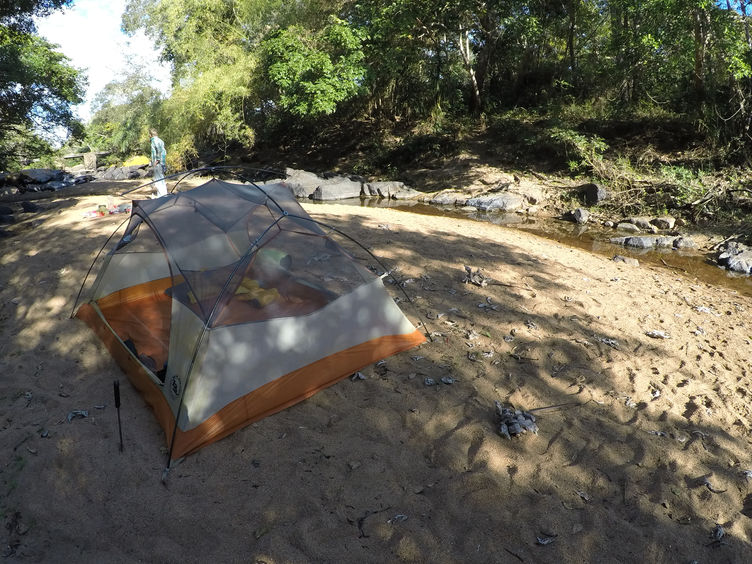CHIQUITANIA
After resting up for a while in Santa Cruz and enjoying some quality time with friends, we were ready to hit the road again. Before heading into Brazil, we wanted to ride through the Chiquitania. An endangered habitat, the Chiquitania is characterized by a tropical and subtropical dry, broad leaf forest and considered a transition zone between the dry Chaco regions in the south and the moist Amazonian forests to the north (WWF). The region obtained its name from the indigenous people Chiquitanos and is where the Jesuits and the Christianized indigenous blended European architecture with local traditions. There are six historic churches – San Francisco Javier, Concepción, Santa Ana, San Miguel, San Rafael and San José – and we road a circuit visiting four.
We had no interest in riding out of Santa Cruz again, so we hopped on a bus until Cuatro Cañadas where we started our ride. The journey began on a hot, flat, dry, gravel road, crossing through industrial agriculture land. Night one, we camped behind a gas station that was located on the edge of the flat lands and the beginning of the forested hills of the Chiquitania. The next three days were spent traversing steep, narrow forest roads that passed through the occasional village where we could fill up on water and perhaps grab a snack or two. There were plenty of camp sights to choose from, although one must choose with extreme caution to avoid the ever presence of leaf cutter ants (they are the devil!!).
The first real town we encountered along the circuit was Concepción. It is a small town with the church and plaza being its main attraction along with a sizable lake on the edge of town. We spent one night there to knock the dust off. From Concepción, the next notable town in route was San Ignacio. The road had now turned to majority new asphalt with intermittent gravel construction zones. I can't speak much for the scenery as the roadsides were thick with invasive vegetation restricting any view that one might have. In general, the traffic was light, only having to contend with the occasional work areas. Bandit camping was possible, but difficult at best. In these situations, it's better to just stop and ask if its okay to camp for a night and rarely will you be faced with denial. The more likely scenario is that you will be invited to a warm shower, hot meal, and a bed. I found San Ignacio to be my favorite town along the circuit with its vibrant mix of people and food options at most any hour of the day.

From San Ignacio, we passed through San Miguel, San Rafael, and Mira Flores, before reaching San Jose de Chiquitos which is located on the primary highway between Santa Cruz de la Sierra and Corumba at the Brazilian border. The road from San Ignacio and San Jose was made up of rough dusty rolling hills with the occasional small home or indigenous community. This was definitely one of those stretches that really makes you appreciate the smooth tarmac. The towns weren't much to write home about honestly, that is unless your into the history of the Jesuit missions. We did encounter some very friendly and giving people along the way; they always leave you feeling quite humbled.
Next up, Brazil. We were back on the main highway leading to Corumba. The scenery was spectacular with massive red rock towers rising from the earth and huge expanses of exposed bluff lines. The surface was nice (actually, spectacular is a better for them after coming off those gravel roads) and there was a wide shoulder with enough space for everyone to share the road. We had been told of a hot water spring that we shouldn't miss that was right on route unlike the other hot springs that always seemed to be some distance out of the way. We came into Aguas Calientes late in the day and found a camp site at a military compound located on the creek (Aguas Calientes is more like a warm river, than hot pools like we had seen before, really cool!). The next day we moved to El Puente which was a private campground a bit further down stream. It was a nice place to sit back and relax and enjoy the clean, clear, warm water. Unfortunately during our time there I had a slightly unexplainable accident and ended up with a severely sprained ankle. This had us back on a bus heading to Santa Cruz for recovery. I would say this was more of a mental blow than physical as I was placed in a cast that was to remain for 3 weeks and an additional 3 weeks of physical therapy. In the end it turned out to be a good thing we went back. Erin went to a doctor to have her hematoma looked at...and it turned out to be much more serious than we expected. In order to avoid an internal blood infection had to have it drained three times and was told to be as immobile as she could.
























